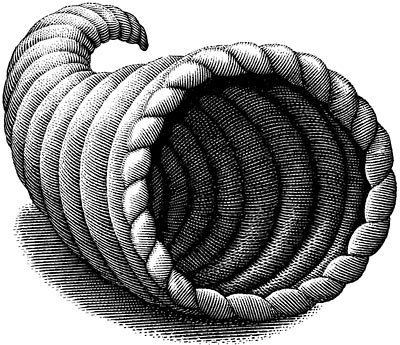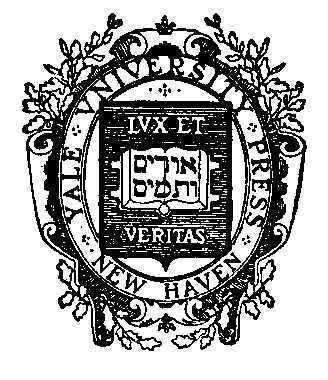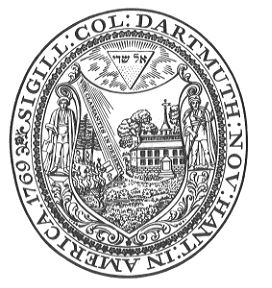The first recorded evidence of a Jewish presence in England were the Jews of Normandy, who came with William the Conquerer, in 1066 AD. The Jews in England flourished and dispersed themselves into the towns of medieval England. The English communities which had a large Jewish population, large enough to sustain a synagogue were: Bristol, Cambridge, Canterbury, Colchister, Exeter, Gloucester, Hereford, Lincoln, London, Northhampton,Norwich, Nottingham, Oxford, Stamford, Winchester, Worcester and York.
Unfortunately peace for the English Jews was short-lived; beginning in 1189, massacres and anti-Jewish riots began. In 1290, the Jews were expelled from England. Elizabeth Hirschman in When Scotland was Jewish proposes many of the Jews emigrated to Scotland where they joined Scottish Jews who had already established a presence a few centuries earlier. Thus the Jews in Scotland and few remaining Jews in England learned a valuable lesson which was to assimilate as a protective measure against losing their fortunes and their very lives.
Fast forward in time to the town of Nottingham; where a group of religious radicals called The Separatists (Independents) gathered in secret to worship. The Separatists were English Protestants, who occupied the extreme radical wing of Puritanism. The Separatists were highly critical of The Church of England. They sought to destroy The Church or at the very least separate from it. Their complaint was The Church of England retained too many aspects of Catholicism. They decried the lax standards and and failure of the people to keep the Sabbath Day holy. Queen Elizabeth I was not threatened by the radicals way of thinking; but her successor, King James I, took issue with their beliefs. Persecution followed and some of The Separatists leaders were jailed. The Separatists fled England in 1608, to Leiden, Holland.
Holland had a large number of practicing Sephardic Jews. Jewish historian Rabbi Gil Marks gives this opinion, “Before reaching Plymouth Rock, the Pilgrims spent several years in Holland, where they came into contact with Sephardim who had immigrated to that country following the expulsion from Spain.”
Amsterdam had a large community of Sephardic Jews and Leiden, where the Pilgrims settled, had a small community of Sephardic Jews. It would be likely The Separatists engaged in dialogue with and subsequently were influenced by their Jewish neighbors. Perhaps as residents of Nottingham, it is possible some of The Separatists represented a remnant of the English Jews who once populated Nottingham? Also it is possible refugee Converso/Crypto Sephardic Jews, keeping their Jewishness a secret, settled in Nottingham after fleeing Spain/Portugal, and joined The Seperatists. No matter what their background, openly Jewish culture and doctrines surely would have attracted their attention. The people and the government in Holland encouraged tolerance and diversity. This openness was a breeding ground for religious and philosophical debate.
After a few years in Holland, the Pilgrims discovered it had a downside; Holland’s liberal society tempted their children into seeking a frivolous Dutch lifestyle; and choosing to speak Dutch rather than English. The Separatists were also harassed by King James’ spies. Desiring to go to a new place in the pristine wilderness of the Americas where worldliness and persecution would not affect them; The Separatists sold themselves into servitude for seven years to the Merchant Adventurers, who financed their journey.
While in England, the Puritan extremists sought to replace English Common law with Biblical laws of the Old Testament, Unsuccessful in their bid to change English law, in America, they were free to enact their own laws. Later, Plymouth Colony and the Massachusetts Assembly passed the “Capital Laws of New England” based almost entirely on the Mosaic law. The Separatists saw themselves as “God’s New Chosen/Covenant people”. The Separatists viewed their journey from England as a replica of the Jewish exodus from Egypt. England became Egypt, the King Pharaoh, the Atlantic Ocean the Red Sea, and America the land of Israel. The Separatist Pilgrims became the new Israelites entering into a new covenant with God in a new Promised Land.
The Pilgrims called themselves “Saints”, and others who were not Separatists, but joined their group were called “Strangers”. The Saints and Strangers all became known as the Pilgrims. Aboard the Mayflower they set out for the Americas on the Mayflower in 1620. We all know the tale about the first hard winter and the help from the local Indians. After a successful harvest the Pilgrims had a Thanksgiving Feast dedicated to God and invited their new Indian friends.
Many American Jewish historians believe when the Pilgrims celebrated the legendary first Thanksgiving in the New World, their conscious frame of reference was Sukkoth: a Jewish holiday of Thanksgiving to God. “Thepilgrims based their customs on the Bible,” says author Gloria Kaufer Greene, “They knew that Sukkoth was an autumn harvest festival, and there is evidence that they fashioned the first Thanksgiving after the Jewish custom of celebrating the success of the year’s crops.”
Linda Burghardt, author of Jewish Holiday Traditions, says, “Sukkoth is considered a model for Thanksgiving. Both holidays revolve around showing gratitude for a bountiful harvest.”
I have noticed the traditional symbol of the horn of plenty resembles the shofar. The shofar is a ram’s horn blown on Rosh Hashanah, also celebrated in Autumn.
The Horn of Plenty or Cornucopia has ancient roots in representing a goat, or sheep or rams horn and abundance of harvest. I see a similarity between the two symbols.

Our family celebrated Sukkoth this year with a local Messianic synagogue. Thanksgiving feels a lot like the harvest festival of Sukkoth and this is no coincidence. The pilgrims invited local Indians to the first Thanksgiving during the fall of 1621. Historians speculate that this celebration occurred somewhere between Sept. 21 and Nov. 9, but most likely in early October, around the time of Sukkoth. Jews also have a Kabbalist tradition of inviting honored guests to Sukkoth. Sephardic Jews were Kabbalists.
“When you sit in the sukkah, ‘the shade of faithfulness,’ the Shekhina spreads Her wings over you and… Abraham, five other righteous ones, and King David, make their dwelling with you…Thus you should rejoice with a shining countenance and every day of the festival together with these guests who lodge with you… (Zohar Emor, 103b) Kabbalah commentary
Inviting their honored guests, the Native Americans, fits nicely into the theory the Pilgrims were celebrating their Protestant version of Sukkoth.
The influence of Jewishness was felt in New England over several generations. The earliest legislation of the colonies in New England were all determined by scripture. In 1639, John Davenport clearly stated the Bible was the legal and moral foundation of New England. The Code of 1655 contained 79 statues, half which contained Biblical references, and virtually all from the Hebrew Bible.
Hebrew also played a primary role in the founding of various colleges included Harvard, Yale, William and Mary, Rutgers, Princeton, Brown, Kings College/Columbia, John Hopkins and Dartmouth. Some of these colleges adopted Hebrew words or phrase as part of their seal.
The Yale seal shows an open book with the Hebrew words “UrimV’ Timum” (Urim and Thummim). This symbol was on the breast plate of the High priest in the Temple.

The Columbia seal has the Hebrew name for God at the top center and the Hebrew name of angels on the banner in the middle.

Dartmouth uses the Hebrew words meaning “God Almighty” in a triangle (Kabbalist symbol) in the upper center of its seal.

So popular was the Hebrew language in the late 16th and early 17th centuries, Hebrew was the course requirement in virtually all of the colleges. Several commencement orations were given in Hebrew. Amazing, because no college in England, at the time, offered Hebrew.
At the time of the American revolution, knowledge of the Hebrew language was still so common, certain members of congress proposed Hebrew be formally established in the United States. Interesting to note, the love of Hebrew ended with the language and did not automatically include the Jewish people. However the Sephardim, because of their ability to assimilate, were more readily accepted than the socially awkward Ashkenazi who came later.
So begs the question, when did the first “real Jews'” appear on the American scene? For those of you who are interested, Stephen Birmingham wrote a lively and fascinating non-fiction book ( it reads like fiction) titled The Grandees: America’s Sephardic Elite. It chronicles the history of the first families of openly practicing Sephardic Jews in the American Colonies who arrived in 1655. It is interesting to note the colorful and quirky ancestors who bravely defied Catholicism; their just as colorful and quirky descendants were disassembled by Protestantism in just a few generations.



I am sure it is me and not wordpress, but I can’t seem to load any links. SO for further information see:
Our pioneer names and DNA. THe rest of the posts explain how this happened
part 1- https://www.millennialstar.org/rising-out-of-obscurity-sephardic-jews-and-the-lds-connection/
What happened in Spain
part 2- https://www.millennialstar.org/part-ii-sephardic-jews-and-the-lds-connection-a-history-of-the-sephardim-in-spain/
Some went to Turkey
part 3- https://www.millennialstar.org/ew/
Some went to Western Europe
part 4- https://www.millennialstar.org/part-iv-lds-and-the-sephardic-connection-western-europe/
Sephardic Influences
part 5- https://www.millennialstar.org/part-v-lds-and-the-sephardic-connection-seeding-the-protestant-reformation/
England and Spain were at war. The Western Europe Converso and Crypto Jews fled even farther west in fear of Spain
part 6- https://www.millennialstar.org/part-vi-lds-and-the-sephardic-connection-braving-the-new-world-the-lost-colony-of-roanoke/
part 7- https://www.millennialstar.org/part-vii-sephardic-jews-and-the-lds-connection-the-first-thanksgiving-or-sukkoth-in-america/
Some Sephardic Jews were part of the tri-isolate communities in America
part 8- https://www.millennialstar.org/part-viii-sephardic-jews-and-the-lds-connection-what-the-heck-is-a-melungeon/
Sephardic descendants preferred to be out on the wilderness
part 9- https://www.millennialstar.org/part-ix-sephardic-jews-and-the-lds-connection-the-great-melungeon-migration/
Sephardim altered or adapted their surnames, but often kept a few Sephardic given names
part 10- https://www.millennialstar.org/part-x-sephardic-jews-and-the-lds-connection-sephardic-names-and-what-to-look-for/
Sephardic Jews had unique illnesses:
https://www.millennialstar.org/family-history-can-save-your-life/
Evidence of Orson Hyde’s Jewish ancestry using the Hirschman model
https://www.millennialstar.org/sephardic-jews-and-the-lds-connection-utah-history-encyclopedia-is-wrong-joseph-smith-was-right-orson-hyde-is-of-jewish-ancestry/
We are all gathered
https://www.millennialstar.org/sephardic-jews-and-the-lds-connection-the-gathering/
I don’t have anything profound to say, other than I find this subject very interesting. I’ve always loved the courucopia too, but then again, I’ve always liked Thanksgiving more than Christmas too.
I think many people choose to ignore the Bible-loving nature of our earliest settlers. These kinds of posts are always a good reminder.
While there is probably a harvest celebration in just about every agrarian culture around the world and throughout history, it does seem that the Separatists were most likely to have known of those in the OT (which were likely practiced by Jews they met in Holland).
Would you say that the Separatists remembered to “thank … the Jews for the Bible which they receive[d] from them”?
Good stuff.
Ben-My opinion is the Separatists of Nottingham were the remnant of Jews who converted in England. As a remnant, they were ignorant of the doctrines and practices of the Jews. In their Converso/Crypto state, they might have retained a few words, knew how to do Sabbath etc… All they had was the Bible. As Jewish descendants they would have sought knowledge and would have been literate. They would have heavily read and applied the Bible, especially the Old Testament. Meeting the Jews in Holland, they felt inferior and desired to be the Lord’s New Covenant People. Do I have evidence of this? No, of course not. Crypto is to not leave evidence.
Love the scripture. I do not know the answer. The Separatists were not the Puritans who came later. It is interesting to read about Plymouth Colony. In the first generation, the original Pilgrims got along well with their Indian neighbors. AFter the first adult generation was out of power, the Colonists went after the Indians and drove them out of the costal areas of New England. The earliest colonists were not picky about who was in their community. They were most interested in skills and loyalty. If there were Converso/Crypto Jews in the colonies ( and I think there were and we will talk about this soon) it was their skills, not their beliefs, that were important. In 50 or so years later, the openly practicing Jews started coming. THere was some religious discrimination, but was quickly overridden because they needed the Jews expertise.
Geoff- I agree, Religious radicals is what they were. God Bless them.
Joyce- Thanks for stopping by to read.
Awesome!
“Crypto is to not leave evidence.” There’s the challenge right there!
Thanks for this incredibly interesting post. The connection between the Pilgrims and the Hebrew language is amazing, and the connection with early American history. Unfortunately, a lot of America’s connection with Hebrew has been forgotten today. Bible students can learn a lot from this. The Pilgrims had a real Bible-based faith that centred on the Hebrew Bible. They named their children hy Hebrew names, such as Joshua, Eli, David, Samuel, etc. It was a real renaissance of interest in the Hebrew language and the Hebrew Bible. But as you say, it is a pity this did not extend to the Jewish people themselves.
Thanks for stopping by Hebrew Scholar. Plase check back next week for further installments.
Pingback: » Part VIII Sephardic Jews and the LDS Connection: What the Heck is a Melungeon? The Millennial Star
Excellent Content! Jewish histories is really impressive.
Excellent issues altogether, you just gained a logo new reader. What would you suggest in regards to your publish that you simply made some days ago? Any sure?